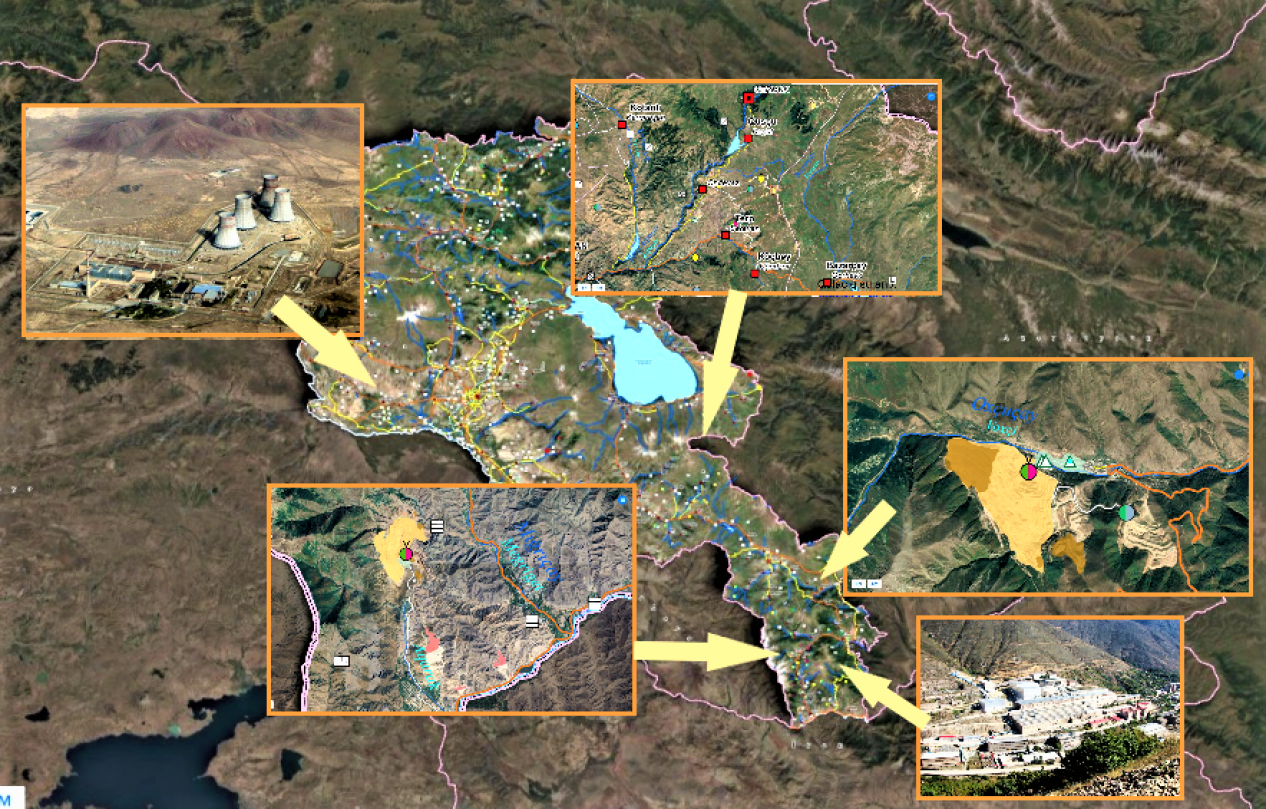
The transboundary Araz River has effectively become a dumping ground for toxic waste from Armenia’s mining and metallurgical industries. Industrial waste produced by both local and international companies operating in the country is discharged into the river via the Okhchuchay and other tributaries.
The Araz River, now severely polluted by chemical, radiological, and toxic waste from the processing of gold, copper, molybdenum, and other metals, stands as a stark warning - an ecological victim of environmental terror. Yet none of the representatives from the prominent foreign companies actively operating in Armenia’s mining industry show the slightest concern for this environmental destruction. Driven by capitalist greed, they ruthlessly exploit the land and ecosystems of other nations - including Azerbaijan - causing irreparable damage. (source)
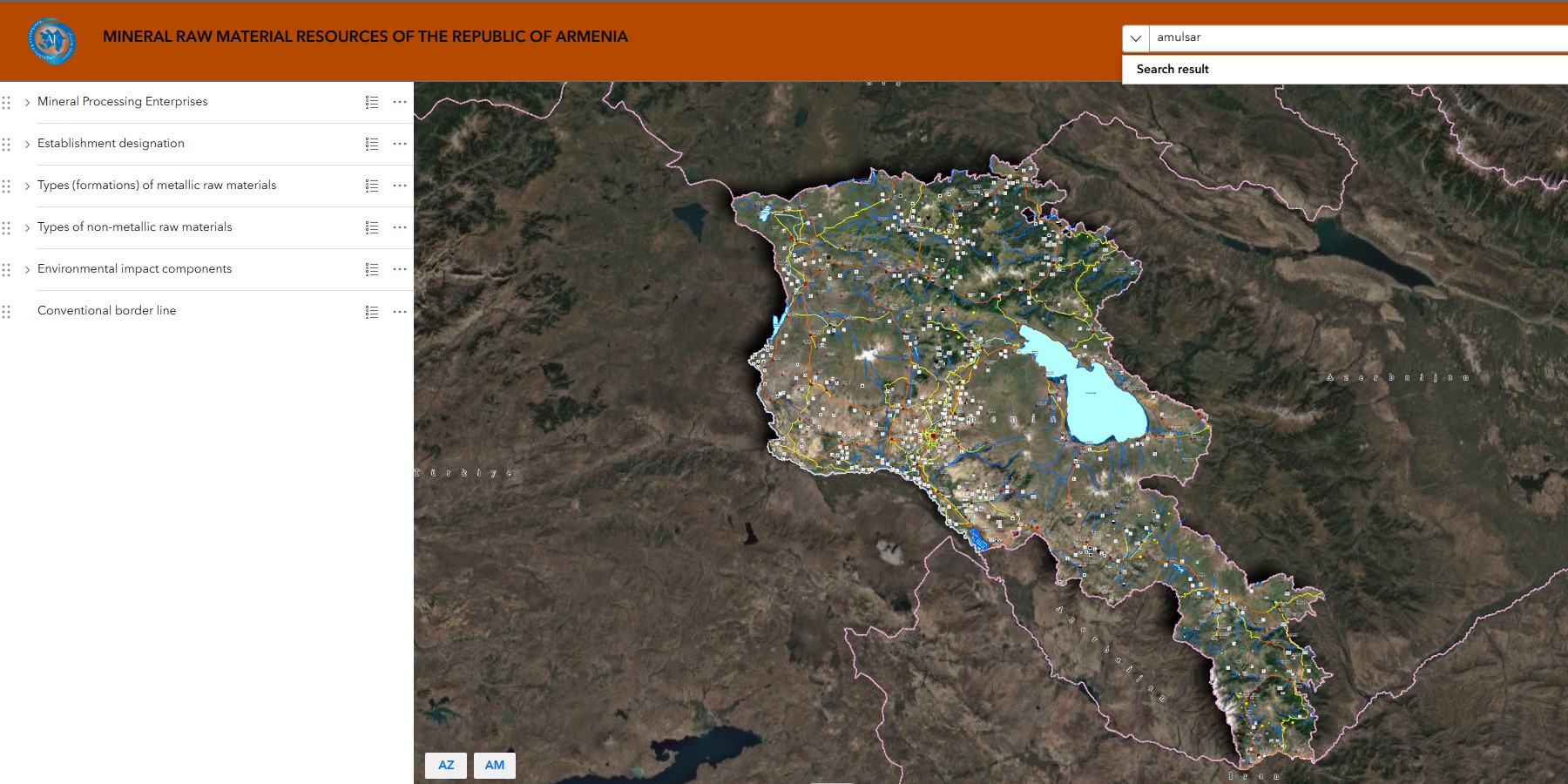
(See the map at the following link)
Armenia pollutes the Araz River through two major industrial sources.
The first is radioactive contamination from the Metsamor Nuclear Power Plant (NPP), which has long exceeded its intended operational lifespan. This waste affects not only the river but also the agricultural lands irrigated by the Araz, posing serious health risks. Numerous pieces of evidence support this claim, including research from science and research institutes, findings by specialized organizations, and radiological testing data.
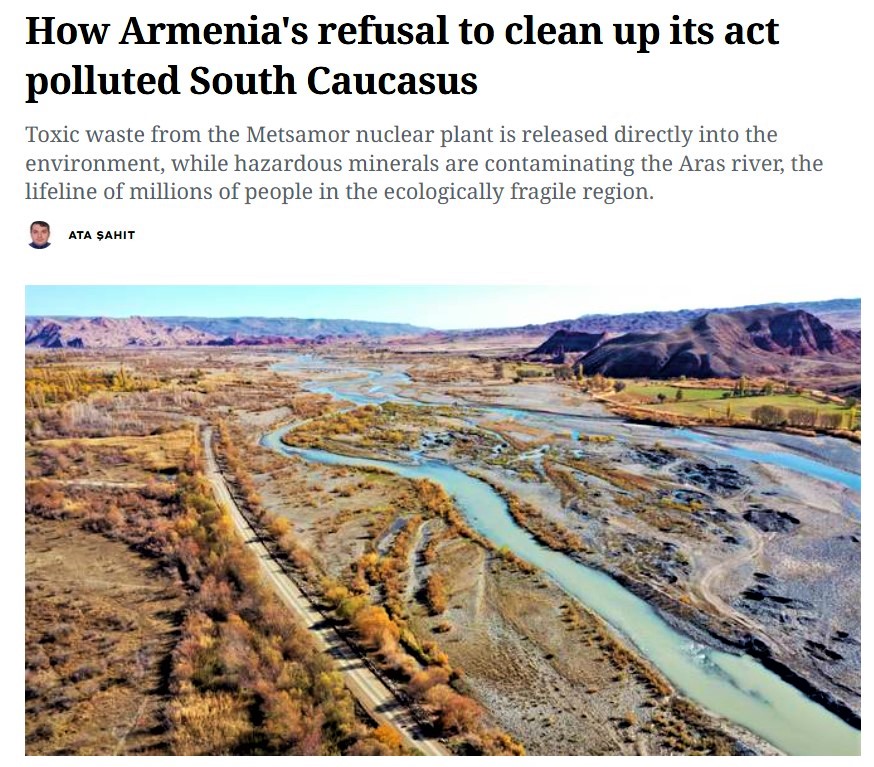
A few years ago, Kamaleddin Pirmuazzin, a representative of the Environmental Protection Committee of the Islamic Republic of Iran’s Parliament, reported that contamination of the Araz River by the Metsamor NPP had caused thousands of cancer cases among residents of the Mughan region in Ardabil province. He urged the Iranian government to take urgent and decisive action. - ekhokavkaza
Afshar Soleimani, Iran’s former ambassador to our country, warned in an interview with Anadolu Agency about radioactive material leakage from the Metsamor NPP into the Araz River. - iranwire
In an article titled “Contamination of the Araz River with Carcinogenic Substances,” Mashallah Razmi, a co-founder of the Ark-Azerbaijan Human Rights Society based in Paris, notes that although Armenia benefits from the river, it pays little attention to preserving its ecological balance.
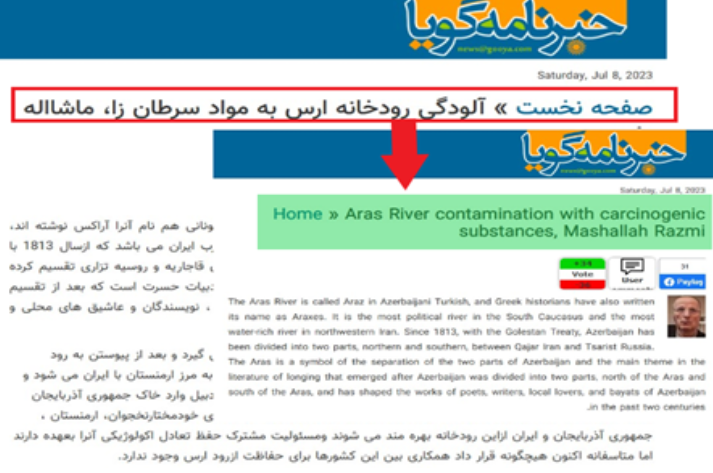
Mahmud Abbaszadeh Meshkin, a member of the National Security and Foreign Policy Commission of the Islamic Consultative Assembly of Iran, stated in an interview with the Camaran website that waste from the Metsamor NPP in Armenia is being discharged into the Araz River.
Brenda Shaffer, a member of the American Political Science Association, noted that the Metsamor NPP poses a serious threat to the health and lives of citizens across all regional nations. Shaffer recalled that authorities in Yerevan had committed to closing the plant in all partnership agreements signed with the European Union, even receiving funding for this purpose; however, Armenia has failed to fulfill these promises.
Five years ago, Russian nuclear physicist Andrey Ojarkovsky issued a grave warning about the ecological disasters the plant could trigger.
The European Union has repeatedly expressed concern over this issue and proposed the plant’s decommissioning as a form of compensation. This matter has been highlighted in legal documents as one of the priority outcomes of the Eastern Partnership Action Plan.
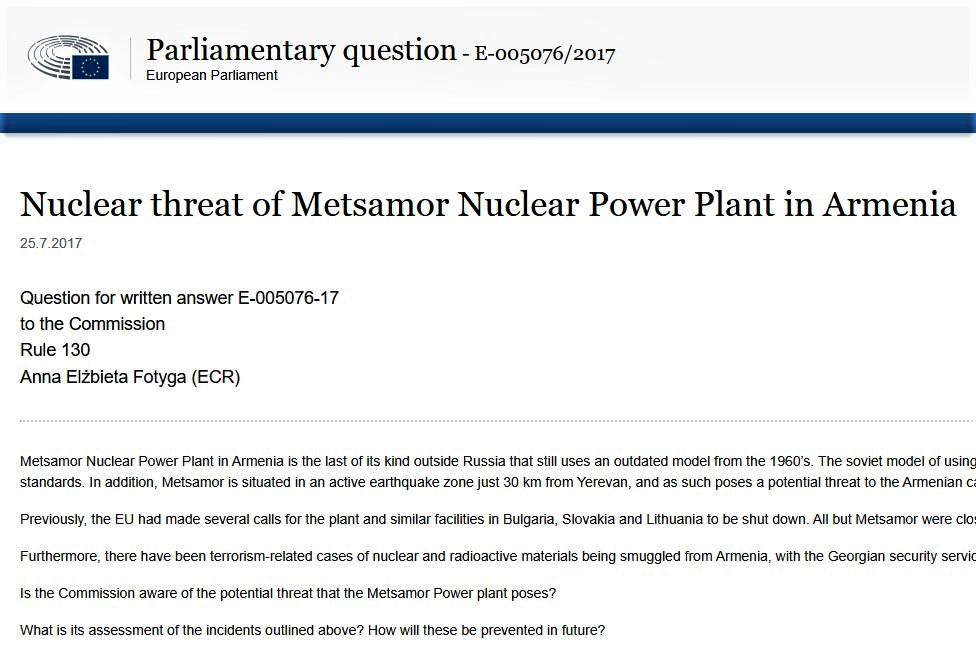
Article 42 of the Comprehensive and Enhanced Partnership Agreement between Armenia and the European Union stipulates that, as part of cooperation in the energy sector aimed at ensuring regional energy security, the Metsamor NPP must be closed and safely decommissioned. EU documents state that this nuclear facility cannot be upgraded to meet international nuclear safety standards. - eur-lex.europa
In April 2011, National Geographic published an article highlighting the operational hazards posed by the outdated Metsamor NPP.
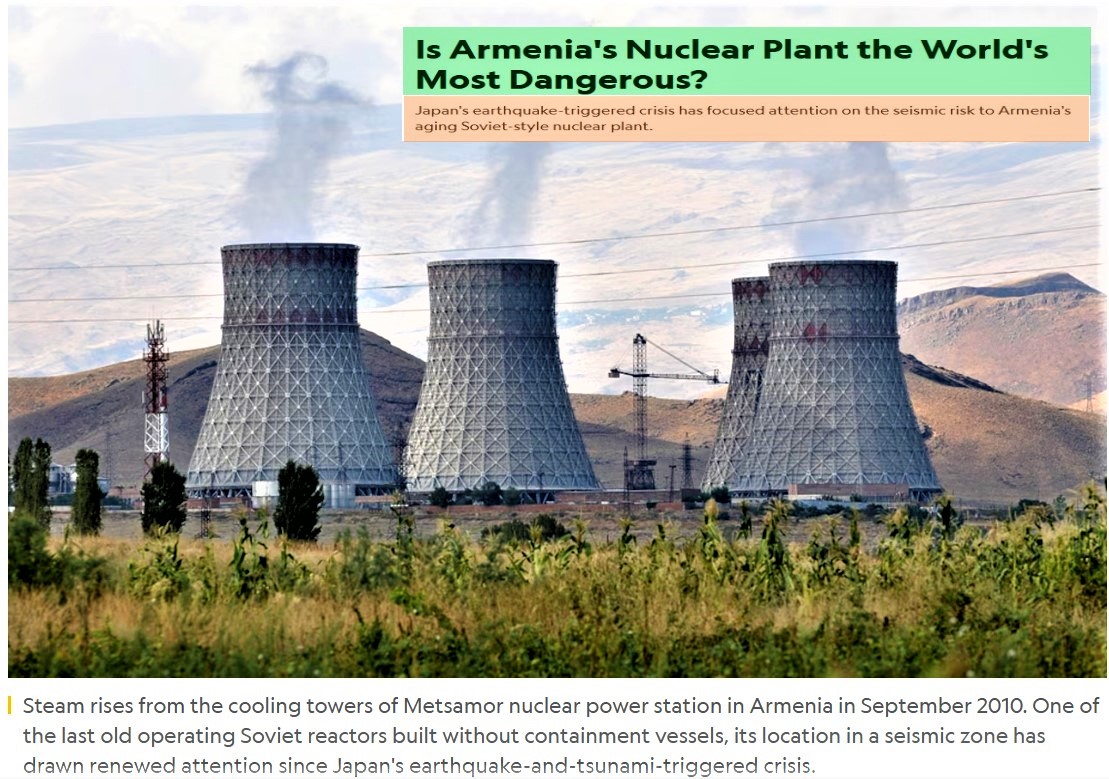
Turkish scientists and respected experts have repeatedly warned about the devastating ecological disasters that the Metsamor NPP could unleash across the entire region.
The renowned American journal Bulletin of the Atomic Scientists has also highlighted the dangers posed by the operation of the Metsamor NPP in Armenia, urging international environmental institutions to take decisive action to ensure its closure.
Other reputable foreign media outlets have also reported on the deadly consequences of pollution from the Metsamor NPP on the Araz River, highlighting its severe impact on human health and agriculture. -thegeopolitics
The second major source of widespread pollution and ecological devastation in the Araz River comes from mining enterprises and metallurgical plants operating in Armenia.
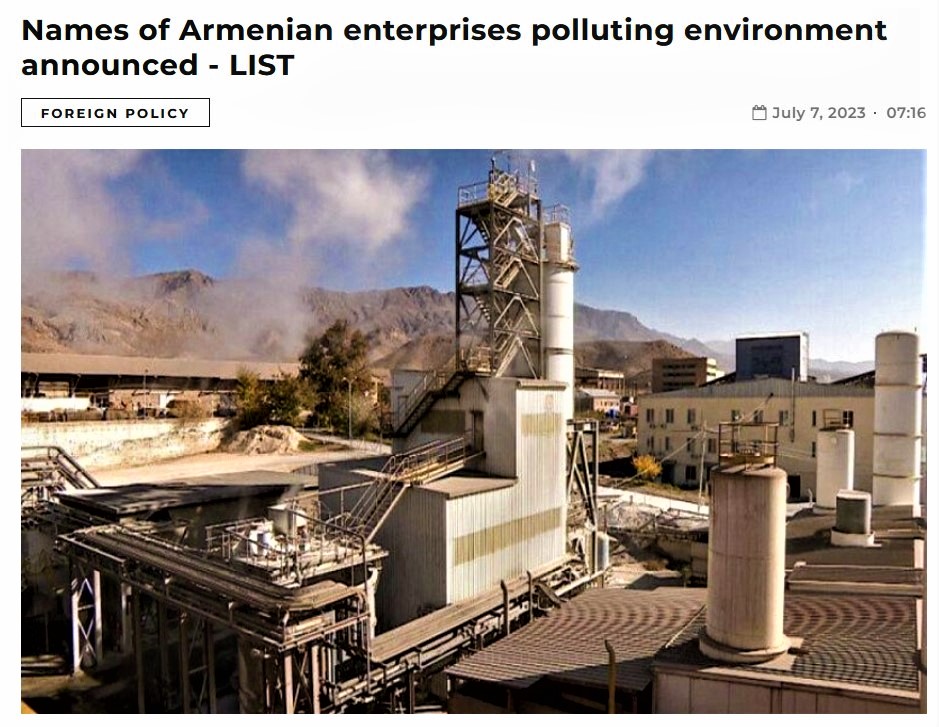
The primary facilities responsible for polluting the Araz in Armenia are the following:
- Zangezur Copper-Molybdenum Combine
- Agarak Copper-Molybdenum Plant
- Kajaran Copper-Molybdenum Facility
- Amulsar Gold Mining Company
- Qafan Mining and Manganese Plant
- Dashdam Gold Mine in Goycha
- Ellyar Metallurgy and Industrial Complex
- Goycha (Gegharkunik) Copper Smelting Plant
and others.
When including medium and small subsidiaries of these major industrial companies, it becomes clear that 26 enterprises in Armenia contribute to the industrial pollution of the Araz River.
The report titled Mining Industry is Prohibited, prepared by the All-Armenian Ecology Front (AAEF), provides extensive coverage of violations in the operations of the Zangezur Copper-Molybdenum Combine. The owners of this vast copper and molybdenum deposit, located in Kajaran, openly discharge their waste into the Artsvanik and three other closed reservoirs. The effluents then flow into the Norashenik and Khalej rivers, eventually reaching the Okhchuchay (Voxchi) River.
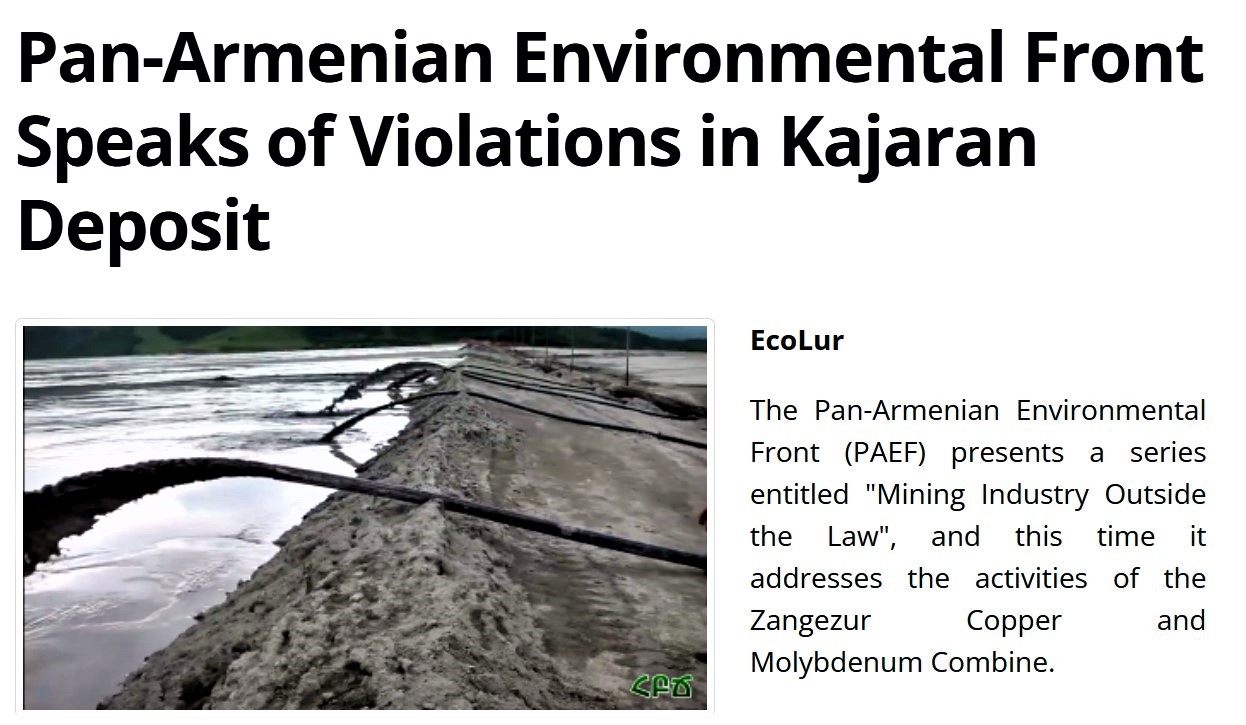
All three rivers ultimately flow into the Araz. AAEF reports that the plant flagrantly violates Article 11.6 of the Environmental Impact Assessment law. - ecolur
In recent years, the plant’s sharp increase in pollution has rendered the Okhchuchay (Voxchi) - the second largest river in Zangezur - unsuitable for irrigation and has led to the extinction of fish species in its waters. -azatutyun
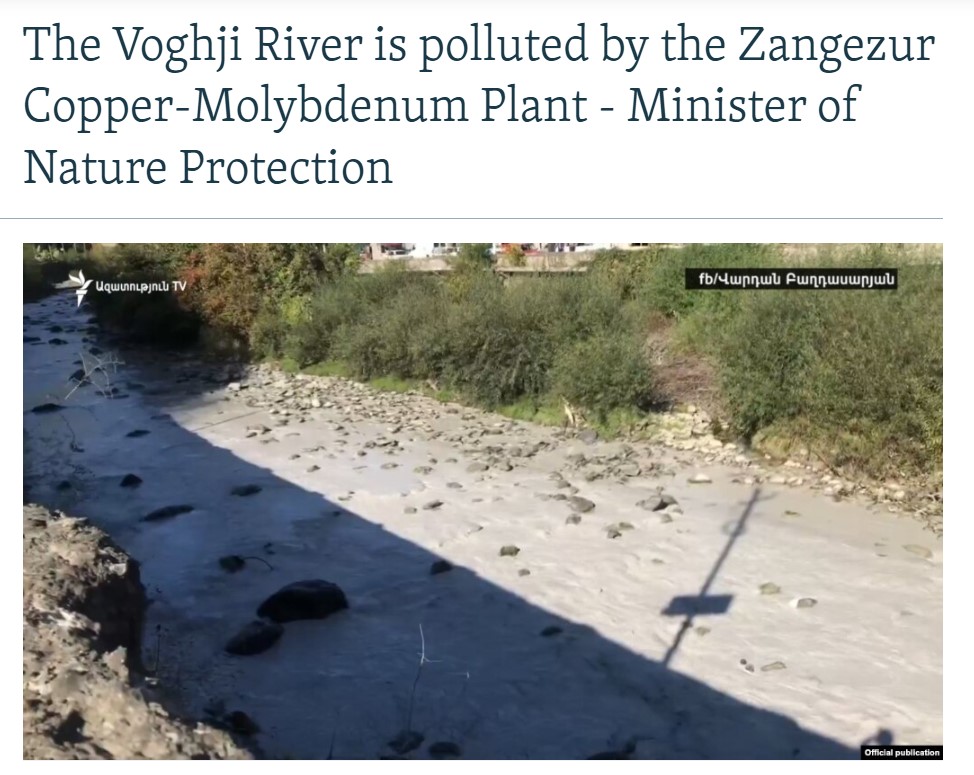
According to Armen Parsadanyan, chairman of the Qafan “Sustainable Development” public organization, the Zangezur Copper-Molybdenum Combine is authorized to discharge treated water into the river; however, the concentration of heavy metals in the water far exceeds permissible limits. Levon Petrosyan, head of the Ecology Inspectorate’s Syunik branch, confirmed these findings. Notably, Armenian residents commenting on the article have also admitted that radioactive waste from the plants is being discharged into the rivers. - hetq.am
Monitoring conducted by Armenia’s Ministry of Environment confirmed that the Zangezur Copper-Molybdenum Combine and the Kajaran Copper-Molybdenum Facility polluted the Araz River basin and surrounding areas with industrial waste. - verelq
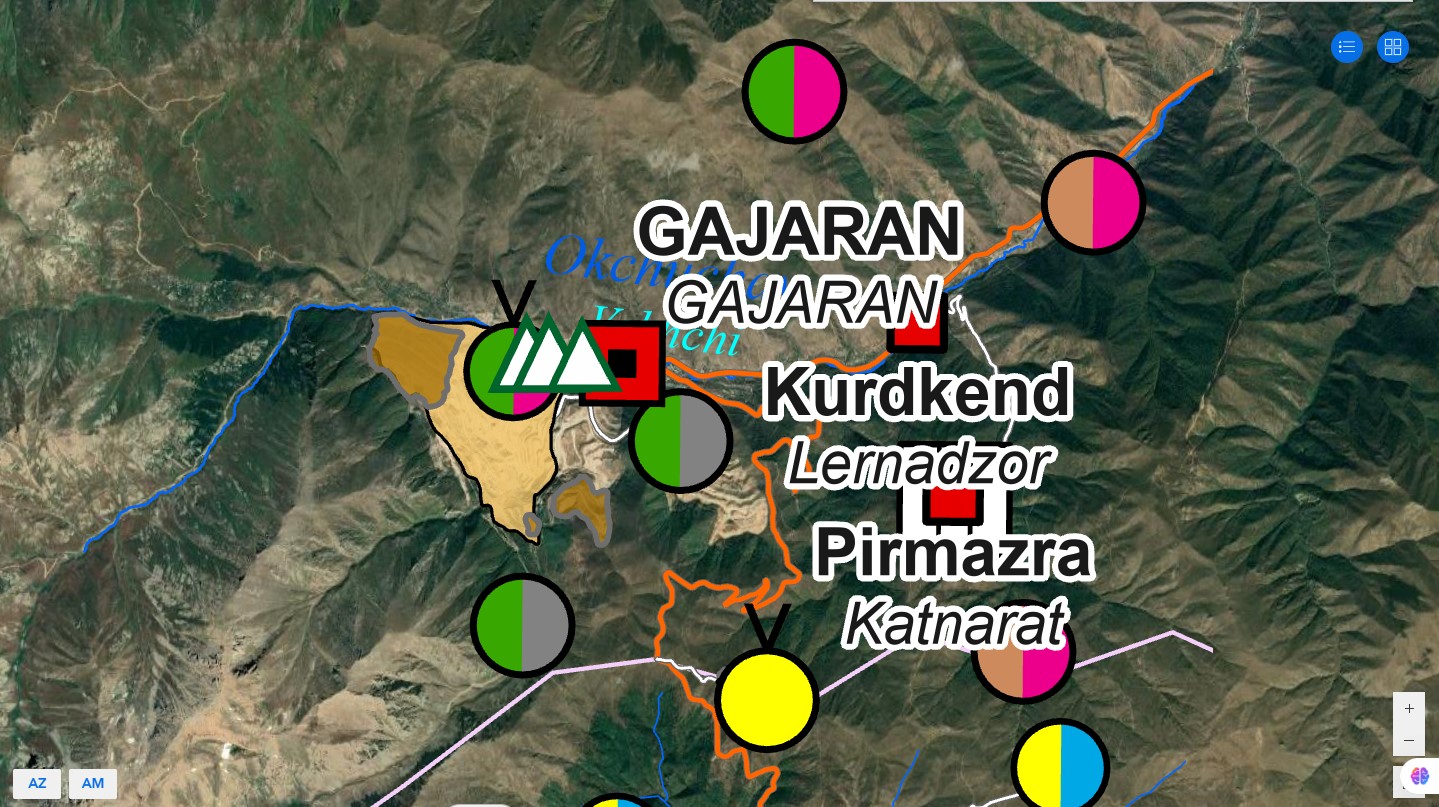
Furthermore, Armenia’s then Minister of Emergency Situations, Feliks Tsolakyan, stated that local ecologists confirmed the water contamination. - arminfo
The plant’s management was formally warned, and the Zangezur Copper-Molybdenum Combine was fined with instructions to resolve the issue; however, to date, no effective solution has been implemented. - verelq
Armenia’s former Minister of Environment stated that multiple criminal cases have been initiated against the Zangezur Copper-Molybdenum Combine for environmental damage, despite numerous warnings being ignored.-news.am
On October 17, 2019, the Syunik District Prosecutor’s Office launched a criminal investigation under Article 284, Part 2, Clause 1 of the Armenian Criminal Code concerning damage to the Okhchuchay pipeline and pollution caused by wastewater from the Zangezur Copper-Molybdenum Combine. - armenpress
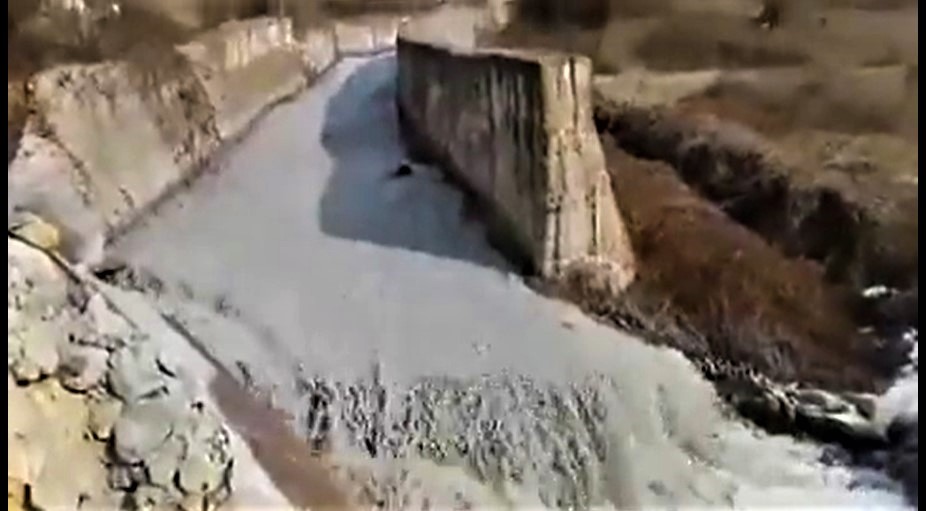
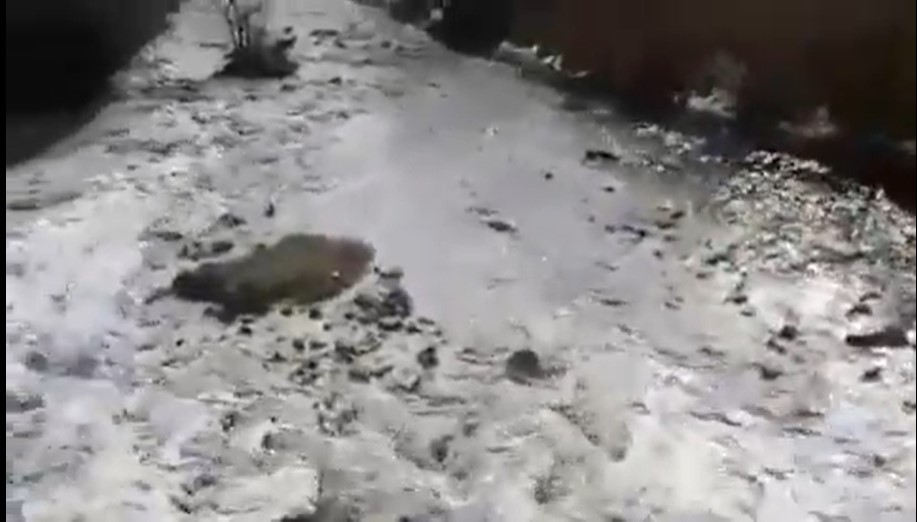
Cronimet Mining GmbH, a German company and main shareholder in the Zangezur Copper-Molybdenum Combine, has also expressed concern over the situation. The company has proposed constructing purification facilities to its Armenian shareholder partners to prevent further pollution of the Araz River.
Wolfgang Manig, Germany’s former ambassador to Azerbaijan, confirmed the contamination of the Okhchuchay River by Armenia and emphasized the urgent need for appropriate measures.
Another major industrial enterprise polluting the Araz River is the Agarak Copper-Molybdenum Plant. This facility has been fined multiple times for environmental damage. Armenia’s Ministry of Environment confirmed reports that the plant leaked chemical substances into the Araz River, stating that at the 381th kilometer of the M2 road, near the Yerevan-Meghri Customs Post, wastewater containing chemicals was discharged into the river. - arminfo

According to Aravot, an operational investigation by the Meghri District Police Department determined that the Agarak Copper-Molybdenum Combine discharged hazardous chemical and biological substances, along with wastewater, into the Araz River through drainage pipes, causing significant environmental damage. The flora and fauna of the river and surrounding areas have been severely affected. Case materials are being prepared, and a forensic chemical examination has been ordered.
The Qafan Mining and Manganese Plant discharges waste containing heavy metals - including chromium, nickel, copper, molybdenum, zinc, aluminum, vanadium, and lead - polluting both the Okhchuchay and Araz rivers.
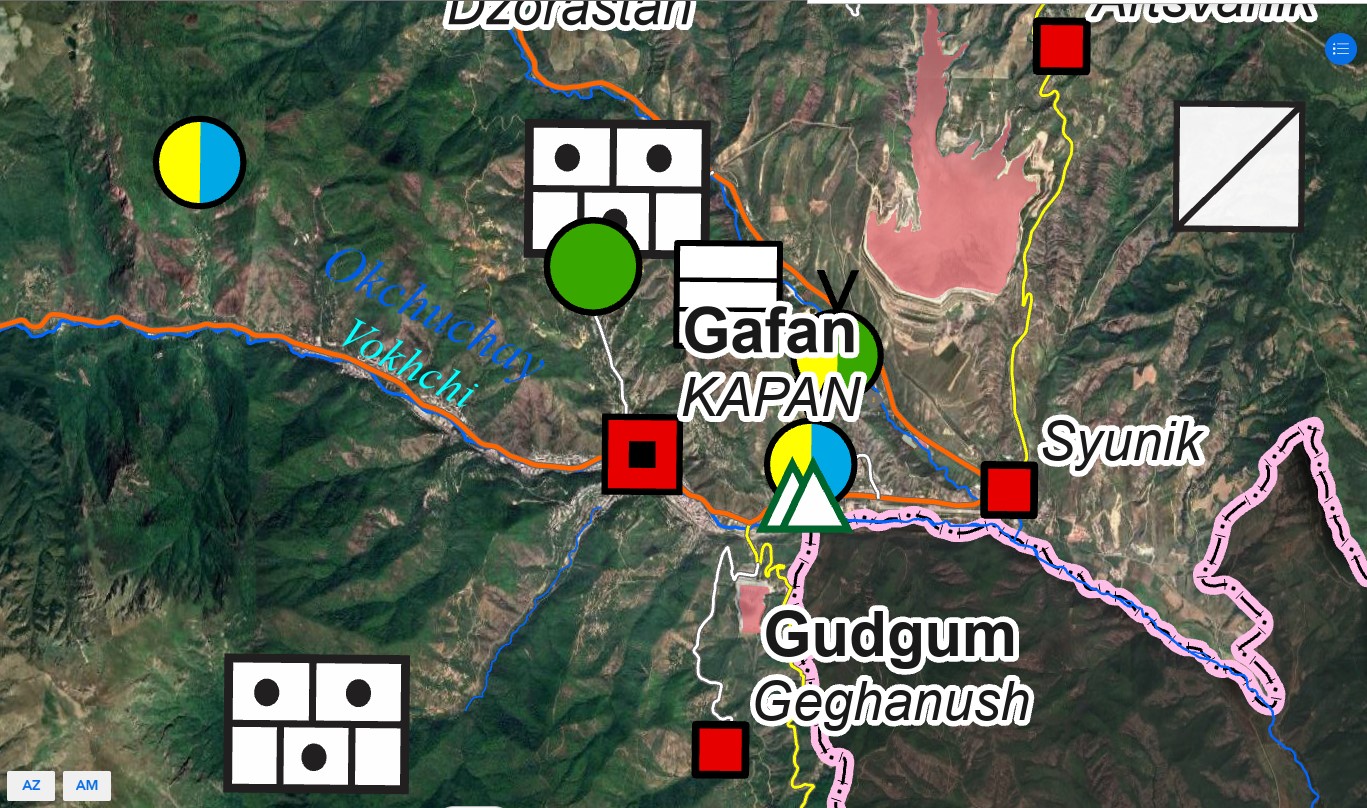
The Agarak Copper-Molybdenum Plant also contaminates the Araz River with ore waste rich in heavy metals via the Kerchivan (Karchevan) River. On average, the facility processes approximately four million tons of ore each year. Currently, the plant’s Devazem tailings reservoir is reported to contain nearly 36.8 million cubic meters of hazardous waste, with effluents from the reservoir being discharged into the transboundary Araz River.
Wastewater from the Dashdam (Dashdem) gold mine in the Goyche (Gegharkunik) region is polluting nearby rivers, including the Bargushad (Vorotan) River - a primary source of drinking water. The Bargushad River ultimately flows into the Araz.
Likewise, the exploitation of the Amulsar gold mine has led to ore waste laden with heavy metals being discharged into the Bargushad, which then carries the contaminants via the Hakari River into the Araz.
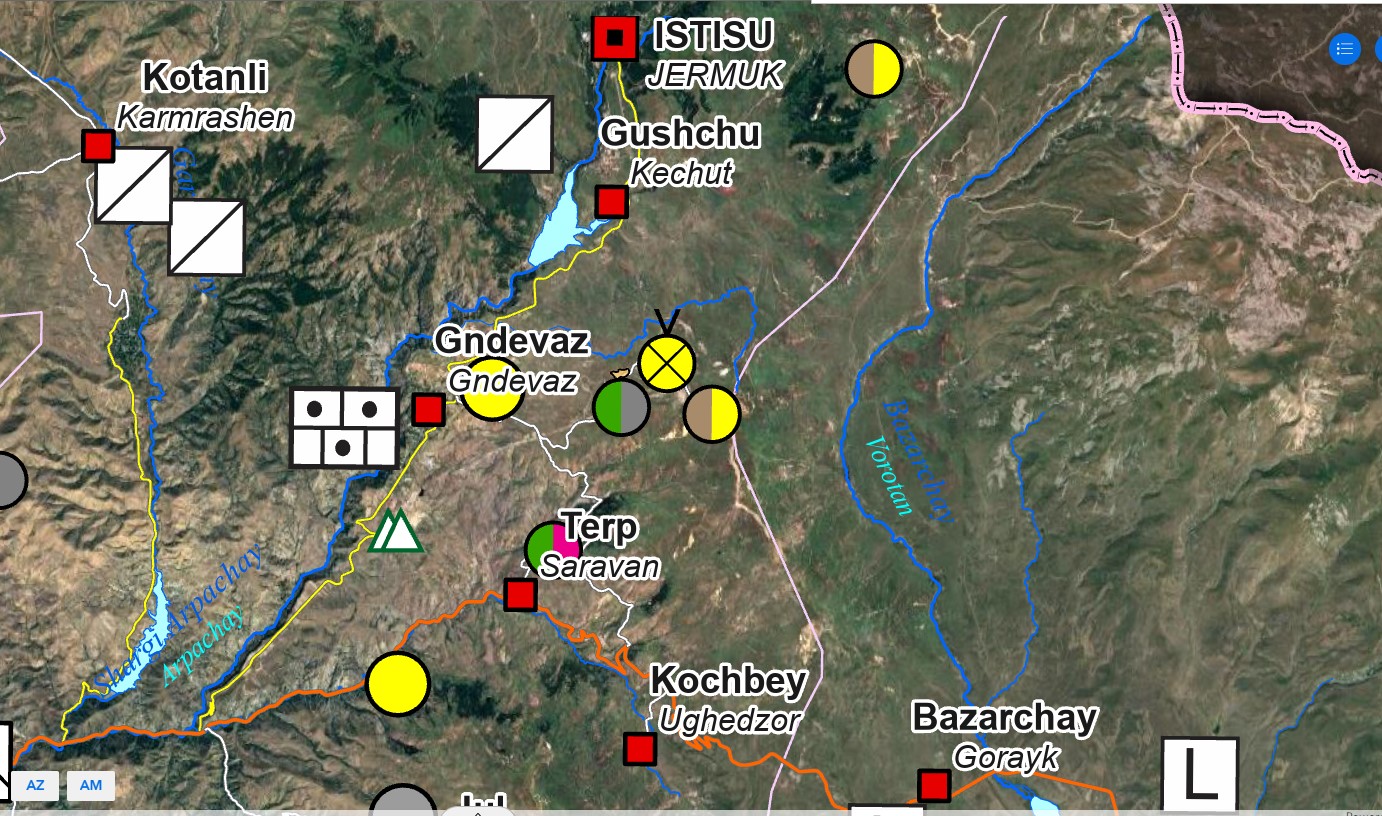
The Qafan Mining and Manganese Plant also contributes to the pollution of the Bargushad and Araz rivers.
Meanwhile, the Ellyar Plant in Kotayk - which specializes in the production of copper, zinc, and lead - contaminates the Arpachay River with heavy metals such as copper, lead, and cadmium, all of which pose serious risks to human health. The Arpachay River flows through the territory of the Nakhchivan Autonomous Republic, eventually merging with the Araz River and, from there, into the Caspian Sea.
The waste produced by the Goycha (Gegharkunik) Copper Smelting Plant is also discharged into the Araz and Arpachay rivers. Moreover, toxic chemical waste from the newly constructed Yeraskh Steel Plant in Arazdoyan is expected to pose a significant environmental threat, with the possibility of its waste being discharged into the Araz River not ruled out.
In addition, 34 sand mines operate within the Araz River basin, significantly contributing to the river’s pollution. Many of these mines operate illegally, and their owners frequently alter the river’s course, worsening the ecological crisis. Armenia’s Ministry of Territorial Administration and Infrastructure has acknowledged that sand quarrying in the Araz River valley has caused changes to the river’s natural flow.
According to Gayane Gabrielyan, former Deputy Minister of Environment, this environmental threat has loomed over the country for 10 to 15 years but remained largely unaddressed until now. Gabrielyan confirmed that the root cause is decades of unchecked sand mining in the Araz valley. The removal of sand from the riverbanks has altered its course. In the Araz basin - particularly in the Ararat and Armavir regions - at least 34 sand quarries have been active, with 21 operating illegally and only 13 running their operations legally. - am.sputniknews
It is noteworthy that despite the close and cordial relations between Armenia and Iran, Tehran has strongly protested Yerevan’s severe ecological violations.
Hamid Ghasemi, former Director General of the Environmental Protection Department of East Azerbaijan Province, told the IRNA news agency that the Araz River has faced severe ecological and public health challenges due to industrial wastewater inflow from Armenia. Ghasemi noted that the problem began in 2006 and continues to persist, identifying wastewater discharge from Armenian copper mining plants as the primary source of pollution.
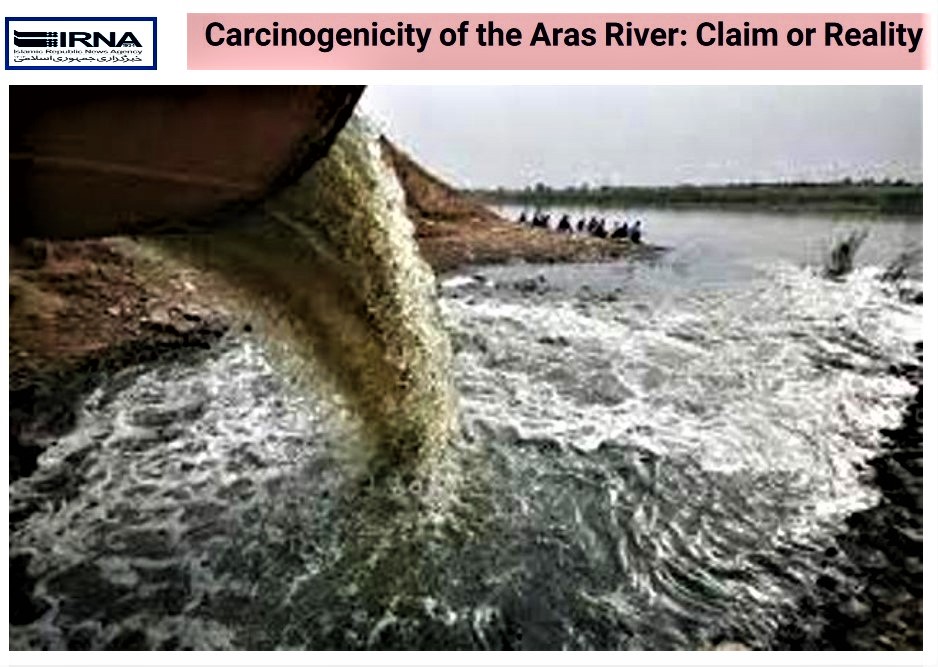
Mohammad Beigi, head of the Civil Defense Center of East Azerbaijan Province, stated that concerns about the situation have been repeatedly conveyed to the relevant officials in Yerevan. Meanwhile, Sumayya Rafii, a member of the Iranian Parliament, stated that Armenia’s pollution of the Araz River has reached a dangerously critical level. At the same time, the Iranian Ministry of Foreign Affairs has called on its Ambassador to Armenia to take decisive action on this matter.
Iran has repeatedly identified the Agarak Copper-Molybdenum Plant’s active role in polluting the Araz River through laboratory analyses of water samples. This issue has raised concerns at the level of Iran’s Attorney General. During Mohammad Jafar Montazeri’s visit to Armenia in 2021, the contamination of the Araz River with heavy metals and chemical substances was also discussed. armenianreport
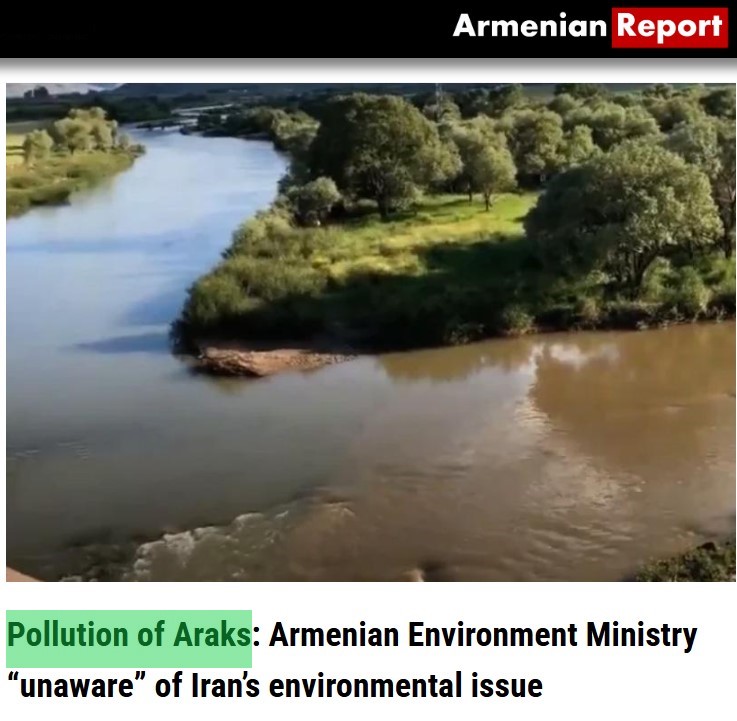
The Iranian newspaper Payamema has also reported on this issue.
Mohammad Hasannejad, a former member of the Iranian Parliament, traveled to Yerevan to draw Armenia’s attention to the severity of the situation. He emphasized that Iran’s Ministry of Foreign Affairs must take urgent measures to prevent further pollution of the river.
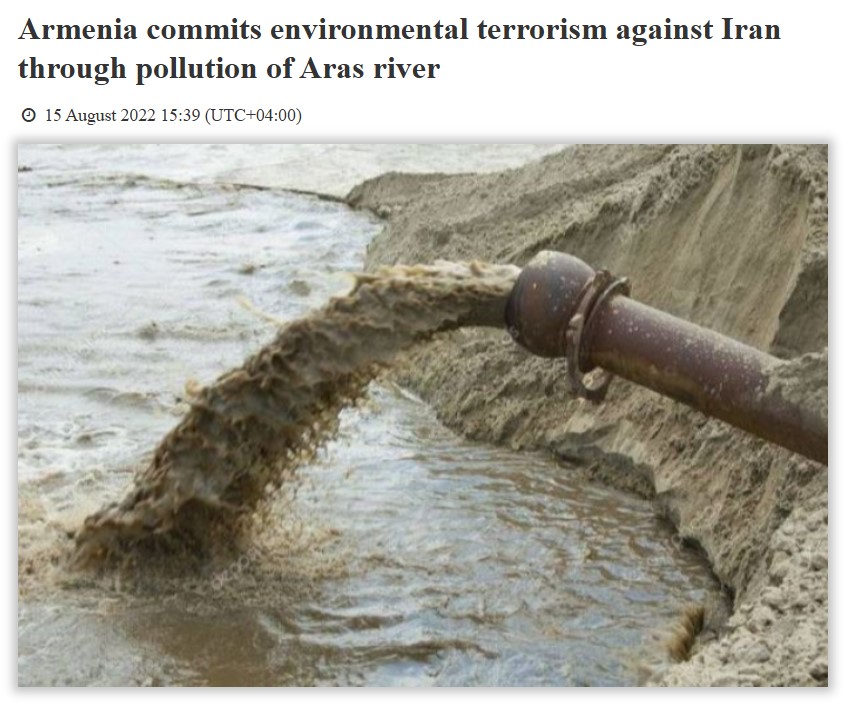
American expert Peter Tase has likewise expressed deep concern, stating that Yerevan’s actions have caused irreparable damage to the ecosystem and environment of the South Caucasus region and neighboring countries.
Renowned British journalist Neil Watson also called on all parties to take effective action to address the ecological crisis caused by Armenia.
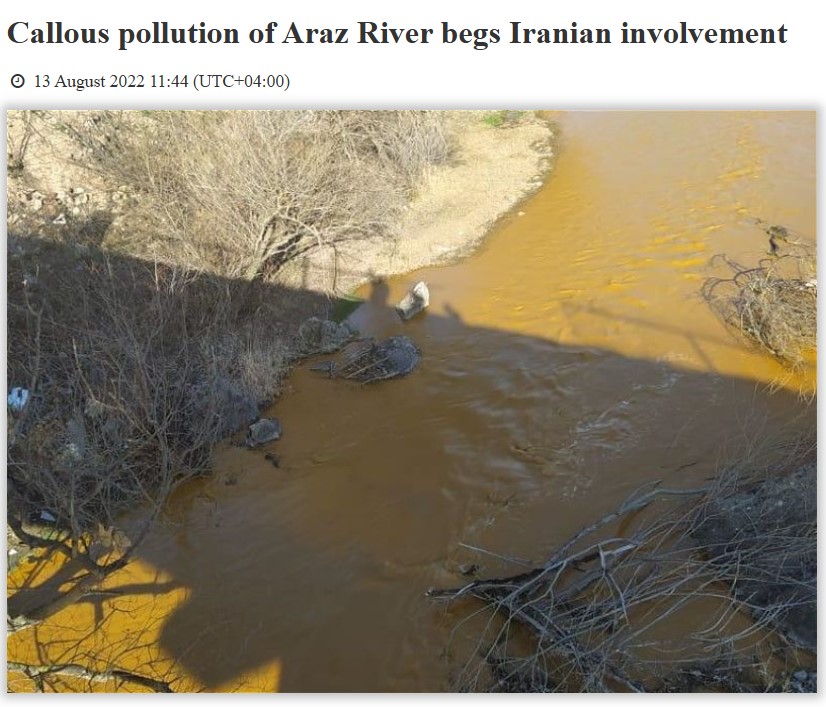
Azerbaijan holds substantial, well-documented evidence on this issue.
According to the Monitoring Department of the Ministry of Ecology and Natural Resources, inspections have confirmed that hundreds of thousands of tons of acidic wastewater, heavy metal salts, and other toxic industrial waste from the Meghri, Qafan, and Dastakert mining complexes are being discharged into the Okhchuchay River - a tributary of the Araz River.
At various times, copper concentrations in the water have exceeded permissible levels by 25 to 50 times, while phenol levels have consistently been 6 to 15 times above the norm.
Concrete evidence and material samples have revealed a significant rise in water mineralization - from 400 mg/L to as high as 1300 mg/L - specifically at the Saatli station on the Araz River.
In 2015, researchers from the Institute of Radiation Problems at the Azerbaijan National Academy of Sciences, as part of the international UETM project, conducted ecogenetic studies on agricultural crops grown in flood-affected and cultivated areas of the İmishli and Saatli districts. The findings revealed an alarming environmental situation: these crops - consumed by the local population - exhibited the adverse effects of contamination caused by natural disasters and transboundary pollution.
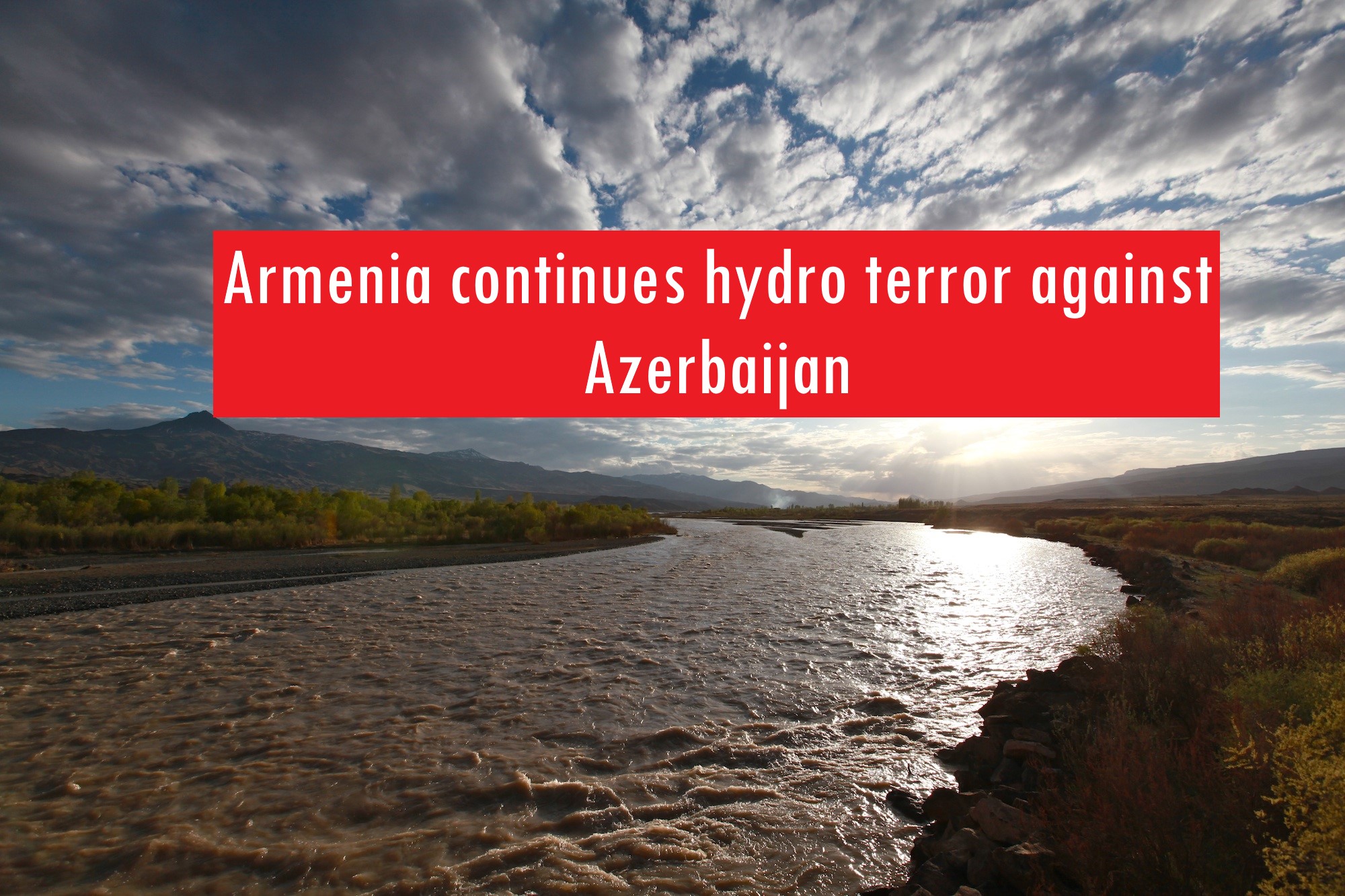
Furthermore, on February 13, 2016, during a panel discussion titled “Climate and Energy Security: Is Warming Still Continuing?” at the Munich Security Conference, President Ilham Aliyev stressed that Azerbaijan’s main water sources originate from neighboring countries and that significant pollution - particularly from Armenia - had been registered.
President Ilham Aliyev once again brought this issue to the attention of the international community in his speech last month.
Therefore, the mining and metallurgical companies in Armenia polluting the Araz River are causing serious harm to all the countries that depend on its waters, committing an act of open ecological genocide. A significant number of these companies belong to developed countries that preach environmental protection and ecological safety globally and promote the idea of ecological solidarity. Their activities in Armenia reveal once again their disregard for environmental programs, irresponsibility, and hypocrisy.
The upcoming article will provide detailed information about the local and foreign companies involved in Armenia’s mining and metallurgical industries that are directly participating in - and complicit with - the poisoning of the Araz River, as well as the severe health risks and deaths suffered by citizens of the countries through which this river flows. Special attention will be given to companies such as Geo Pro Mining, Ameliya Mining, АSSAT, Gegamet Plyus, Vallex Group, Lydian International Ltd, Chaarat Gold International Limited, Comsup Commodities, Cronimet Mining GmbH, GPM Gold, Global Gold Armenian Ltd”, Geologix Group, and Deccan Gold Mines Ltd.
Additionally, subsidiary companies from Argentina, Australia, France, U.S., Russia, Switzerland, the Netherlands, Lebanon, Greece, Uruguay, India, Canada, and other countries have been identified as part of the global network of firms whose operations in Armenia's mining and metallurgical sectors are contributing to the ecological degradation of the Araz River.




















